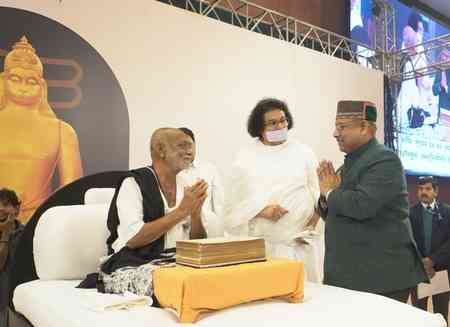All You Need to Know About Keratoprosthesis
In the realm of ophthalmology, technological advancements have allowed us to reimagine the possibilities for the people who are struggling with severe corneal diseases. Keratoprosthesis is often referred to as the ‘artificial cornea’, is a revolutionary procedure that has changed the lives of countless individuals who are suffering from Bilateral end stage corneal blindness.

By Dr. Pallavi Joshi, Consultant- Cornea, Ocular Surface, and Refractive Surgery, Sankara Eye Hospital, Bangalore.
In the realm of ophthalmology, technological advancements have allowed us to reimagine the possibilities for the people who are struggling with severe corneal diseases. Keratoprosthesis is often referred to as the ‘artificial cornea’, is a revolutionary procedure that has changed the lives of countless individuals who are suffering from Bilateral end stage corneal blindness.
The cornea is the transparent, dome shaped outer layer of the eye, responsible for focusing light onto the retina. There are several conditions like chemical injuries, autoimmune disease, drug reactions (SJS)that can damage the cornea that can lead to severe vision impairment or even cause blindness. Traditional treatments like corneal transplants may not be suitable for all the patients, that prompts the need for innovative alternatives.
Keratoprosthesis is a surgical procedure that is designed to restore vision in individuals with compromised corneas. The impact of Keratoprosthesis on patients is nothing less than extraordinary. Individuals who once faced the chances of permanent blindness can now enjoy improved vision and enjoy life without depending on anyone. Daily tasks that were once daunting for them becomes manageable, from reading and deleted to recognizing faces and navigating the surrounding with confidence.
Unlike, corneal transplants, which replace the entire cornea and which also has chances of failures due to many reasons including rejection as non self ,Keratoprosthesis involves implanting a small, biocompatible implant that acts as an artificial cornea. This device provides a clear pathway for light to enter the eye, essentially bypassing the damaged cornea.
One of the most remarkable aspects of Keratoprosthesis is its versatility. There are different types of Keratoprosthesis depending on the patients eye condition of whether dry surface or wet ,we can choose different variants of Keratoprosthesis. This customization ensures that individuals with complex eye condition who are not responding to the traditional treatments can regain functional vision and improve their quality of life says
The field of Keratoprosthesis is continually evolving. Researchers are exploring ways to enhance the durability and safety of these devices, that aims to make the procedure even more accessible and effective. With ongoing developments, we can anticipate even better outcomes for patients in the future.
While Keratoprosthesis offers immense promise, it is not without its challenges. Patients require lifelong follow-up care to monitor for potential complications, such as infection or device dislocation. Since these have challenges like limited visual fields and altered cosmetic appearance it needs careful counselling of patients and family members in great detail. Additionally, not all individuals are suitable candidates for this procedure, making careful patient selection very crucial. These procedures are reserved only as last resort and only in bilateral corneal diseases with procedure always done only to one eye.
Keratoprosthesis depict as a ray of hope for those battling bilateral corneal blindness not suitable for conventional transplants. It has helped to transformed lives, restoring vision and opening up new opportunities for individuals who once faced a world of darkness. As research and technology continue to advance, the future holds even more promise for those seeking to regain their sight through this remarkable procedure. Keratoprosthesis serves as a testament to human ingenuity and our unwavering commitment to improving the lives of those in need.


 City Air News
City Air News 










